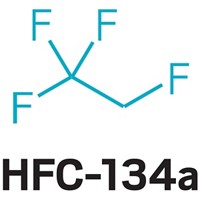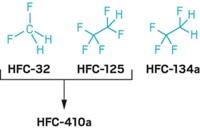Advertisement
Grab your lab coat. Let's get started
Welcome!
Welcome!
Create an account below to get 6 C&EN articles per month, receive newsletters and more - all free.
It seems this is your first time logging in online. Please enter the following information to continue.
As an ACS member you automatically get access to this site. All we need is few more details to create your reading experience.
Not you? Sign in with a different account.
Not you? Sign in with a different account.
ERROR 1
ERROR 1
ERROR 2
ERROR 2
ERROR 2
ERROR 2
ERROR 2
Password and Confirm password must match.
If you have an ACS member number, please enter it here so we can link this account to your membership. (optional)
ERROR 2
ACS values your privacy. By submitting your information, you are gaining access to C&EN and subscribing to our weekly newsletter. We use the information you provide to make your reading experience better, and we will never sell your data to third party members.
Environment
U.S., China To Cooperate On Reducing Potent Greenhouse Gases
Climate Change: Presidents Obama and Xi agree to curb manufacture of hydrofluorocarbons
by Cheryl Hogue
June 10, 2013
In a move signaling greater cooperation on climate change, President Barack Obama and Chinese President Xi Jinping announced on June 8 that they would work cooperatively to phase down production and use of hydrofluorocarbons (HFCs).
HFCs are a family of potent greenhouse gases whose use is growing rapidly worldwide. They are refrigerants developed as substitutes for two classes of compounds that deplete the stratospheric ozone layer: chlorofluorocarbons and hydrochlorofluorocarbons. HFCs do not harm stratospheric ozone, but they are highly efficient at trapping heat in the atmosphere. For instance, one molecule of HFC-134a, used in car air conditioners, has 1,300 times the global warming potential of a molecule of CO2 over a century, according to the Intergovernmental Panel on Climate Change.
A year ago at the United Nations Conference on Sustainable Development, countries struck a nonbinding deal to phase down HFCs. The new agreement between Obama and Xi, announced at a retreat for the two superpower presidents in California, lays out a broad course for implementing that global goal. They pledged that the U.S. and China will work together and with other countries to address the growing challenge of human-caused climate change by phasing down manufacture and consumption of HFCs.
In the past, the U.S. and China, the world’s two largest emitters of greenhouse gases, have often been at loggerheads in discussions on curbing greenhouse gas releases. The agreement appears to marks a change in direction.
“The U.S. and China are the two biggest players in the international climate arena, and the fact that they’re talking about cooperation is a pretty big deal,” says Fred Krupp, president of Environmental Defense Fund, an advocacy group.
Achim Steiner, executive director of the UN Environment Programme, says the agreement by Obama and Xi gives a confidence boost to those working to hammer out a new international climate-change treaty. Negotiators from around the globe hope to finish a new accord by 2015 that would include emissions limits for all nations that are major releasers of greenhouse gases.




Join the conversation
Contact the reporter
Submit a Letter to the Editor for publication
Engage with us on Twitter